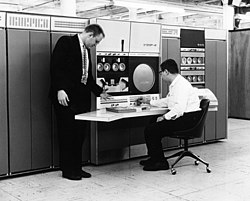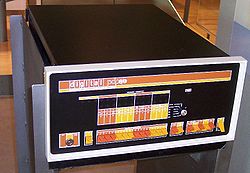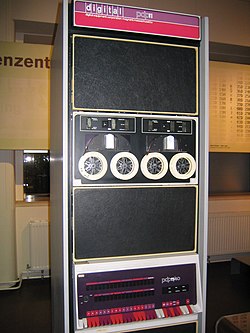







Programmed Data Processor (PDP), referred to by some customers, media and authors as "Programmable Data Processor," [1] [2] [3] is a term used by the Digital Equipment Corporation from 1957 to 1990 for several lines of minicomputers. [4]
Contents
The name "PDP" intentionally avoids the use of the term "computer". At the time of the first PDPs, computers had a reputation of being large, complicated, and expensive machines. The venture capitalists behind Digital (especially Georges Doriot) would not support Digital's attempting to build a "computer" and the term "minicomputer" had not yet been coined. [5] [6] So instead, Digital used their existing line of logic modules to build a Programmed Data Processor and aimed it at a market that could not afford the larger computers.